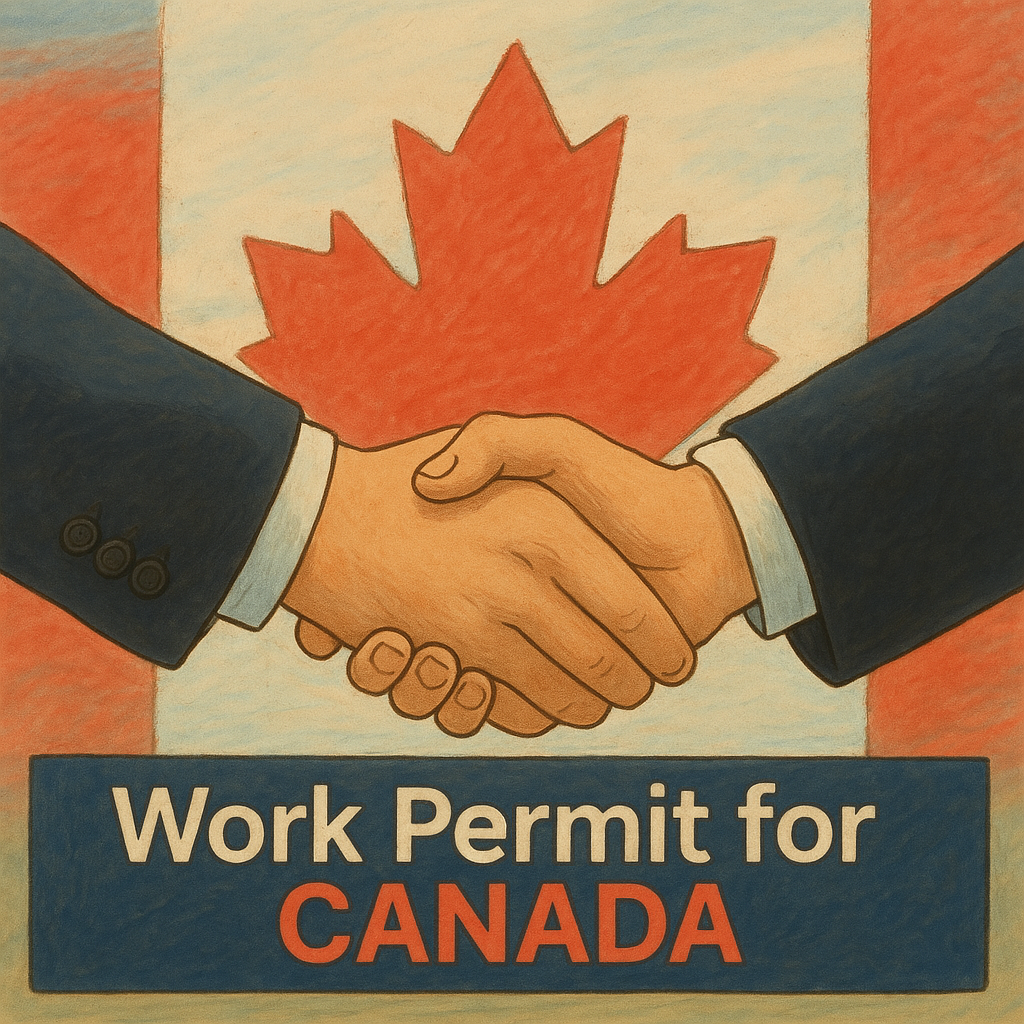Canada is one of the most sought-after destinations for international workers, offering excellent job opportunities, a high standard of living, and a strong economy. If you’re planning to work in Canada, obtaining a work permit is a crucial step. This comprehensive guide will walk you through the requirements, application process, and essential tips to help you secure your Canadian work permit in 2025.
Understanding Canadian Work Permits
A Canadian work permit is an official document issued by Immigration, Refugees, and Citizenship Canada (IRCC) that allows a foreign national to work legally in Canada for a specific employer and duration. There are two main types of work permits:
- Employer-Specific Work Permit (ESWP): Allows you to work for a particular employer, at a specific location, and under set conditions.
- Open Work Permit (OWP): Enables you to work for any employer in Canada, except those who do not comply with labor laws.
Who Needs a Work Permit to Work in Canada?
Most foreign nationals require a work permit to be employed in Canada. However, some categories are exempt, including:
- Business visitors (attending meetings or conferences without entering the labor market).
- Foreign representatives and their family members.
- Performing artists, athletes, and coaches.
- Emergency service providers.
- Clergy and other religious workers.
- Certain researchers and students (under specific conditions).
Eligibility Requirements for a Work Permit in Canada
To qualify for a work permit in Canada, applicants must:
- Prove they will leave Canada upon work permit expiry.
- Have sufficient financial resources to support themselves and their family during their stay.
- Have no criminal record (a police clearance certificate may be required).
- Be in good health and undergo a medical exam if necessary.
- Not work for an employer ineligible under Canadian labor laws.
- Provide all required documentation and pay the application fee.
Step-by-Step Process to Apply for a Canadian Work Permit
Step 1: Determine Work Permit Type
Identify whether you need an employer-specific or open work permit. Your prospective employer may need to obtain a Labour Market Impact Assessment (LMIA) from Employment and Social Development Canada (ESDC) before hiring you.
Step 2: Gather Required Documents
- Valid passport (valid for the duration of your stay).
- Job offer letter or contract (for employer-specific permits).
- LMIA approval letter (if applicable).
- Proof of work experience and educational qualifications.
- Proof of financial support.
- Medical exam results (if required).
- Police clearance certificate (if applicable).
Step 3: Submit Your Application
You can apply online through the IRCC website or at a Visa Application Center (VAC) in your country. Ensure you complete all forms accurately and pay the required fee (CAD 155 for most work permits in 2025).
Step 4: Biometrics & Medical Examination
Applicants from certain countries must provide biometrics (fingerprints and photos) at a local VAC. If a medical exam is required, schedule an appointment with an IRCC-approved panel physician.
Step 5: Wait for Processing & Decision
Processing times vary by country and work permit type. Generally, applications take 2-6 months. You may be asked for additional documents or an interview before approval.
Step 6: Receive Work Permit & Travel to Canada
Once approved, you will receive a Port of Entry (POE) letter. Present it to the border officer when you arrive in Canada to obtain your work permit.
Tips to Increase Your Chances of Approval
- Ensure Complete Documentation: Missing or incorrect documents can delay or result in application rejection.
- Show Strong Ties to Home Country: Provide evidence of family, employment, or property to prove you intend to return after your work permit expires.
- Apply Early: Start your application process at least six months before your intended travel date.
- Follow Employer Guidelines: If your employer needs an LMIA, ensure they apply well in advance.
- Seek Professional Help: Consider consulting an immigration lawyer or expert for guidance.
Common Reasons for Work Permit Rejections
- Incomplete application or missing documents.
- Insufficient proof of financial stability.
- Failure to convince IRCC that you will leave Canada after your work permit expires.
- Employer does not meet eligibility requirements.
- Medical or criminal inadmissibility.
Renewing or Extending Your Work Permit in Canada
If you wish to continue working in Canada, apply for an extension at least 30 days before your permit expires. Your employer may need to obtain a new LMIA if required.
Pathways to Permanent Residency (PR) Through Work
If you intend to stay in Canada long-term, several immigration programs allow work permit holders to transition to permanent residency:
- Express Entry (EE): For skilled workers with Canadian experience.
- Provincial Nominee Program (PNP): For workers nominated by a Canadian province.
- Canadian Experience Class (CEC): For individuals with at least one year of Canadian work experience.
- Atlantic Immigration Program (AIP): For workers in Atlantic Canada (Nova Scotia, New Brunswick, PEI, Newfoundland & Labrador).
Conclusion
Securing a Canadian work permit in 2025 requires careful planning, thorough documentation, and adherence to immigration guidelines. By understanding the requirements, following the application process correctly, and preparing adequately, you can increase your chances of obtaining a work permit and pursuing career opportunities in Canada.
For the latest updates on Canadian work permits, visa policies, and immigration news, visit Work Access Permit regularly.
